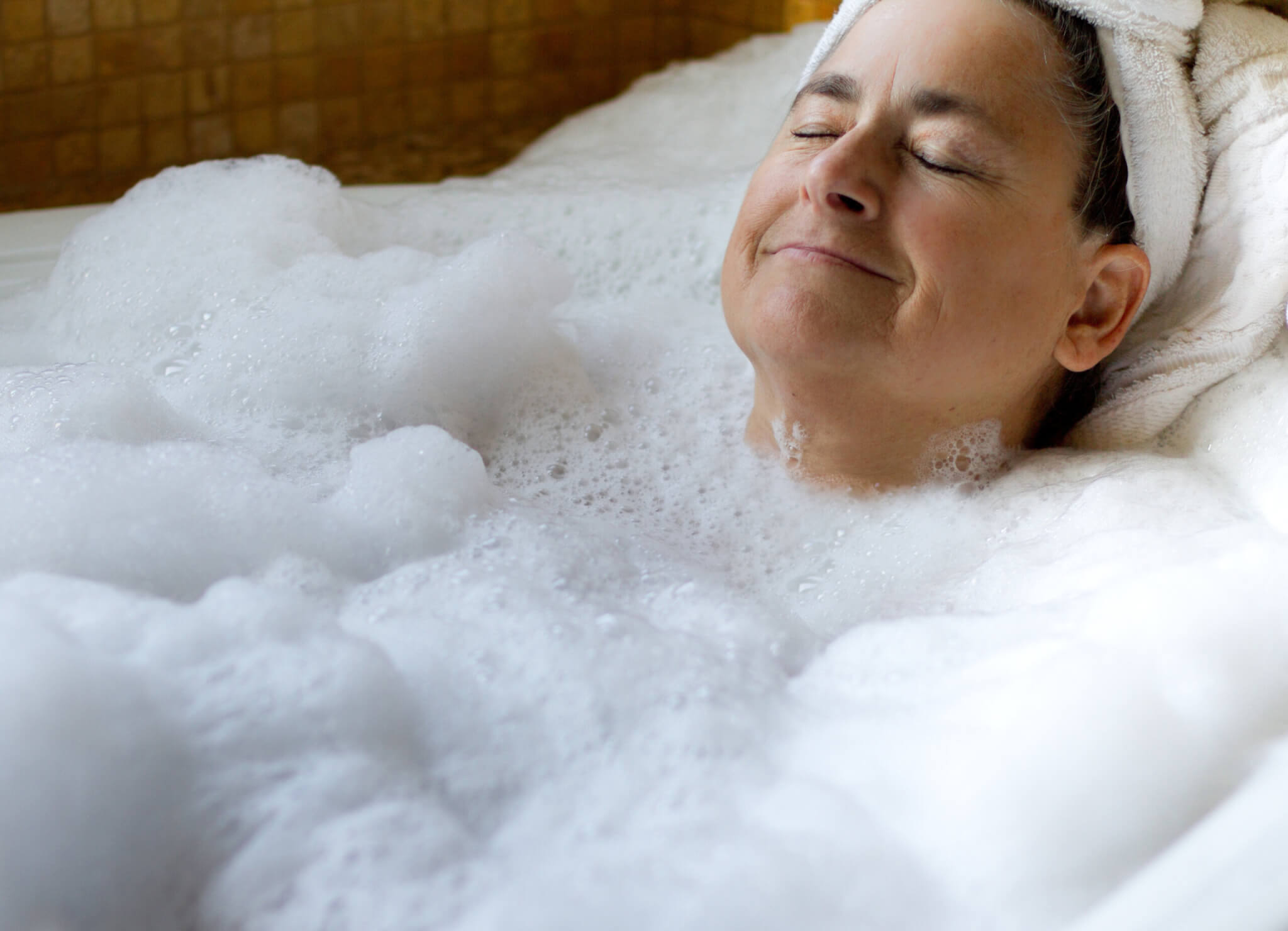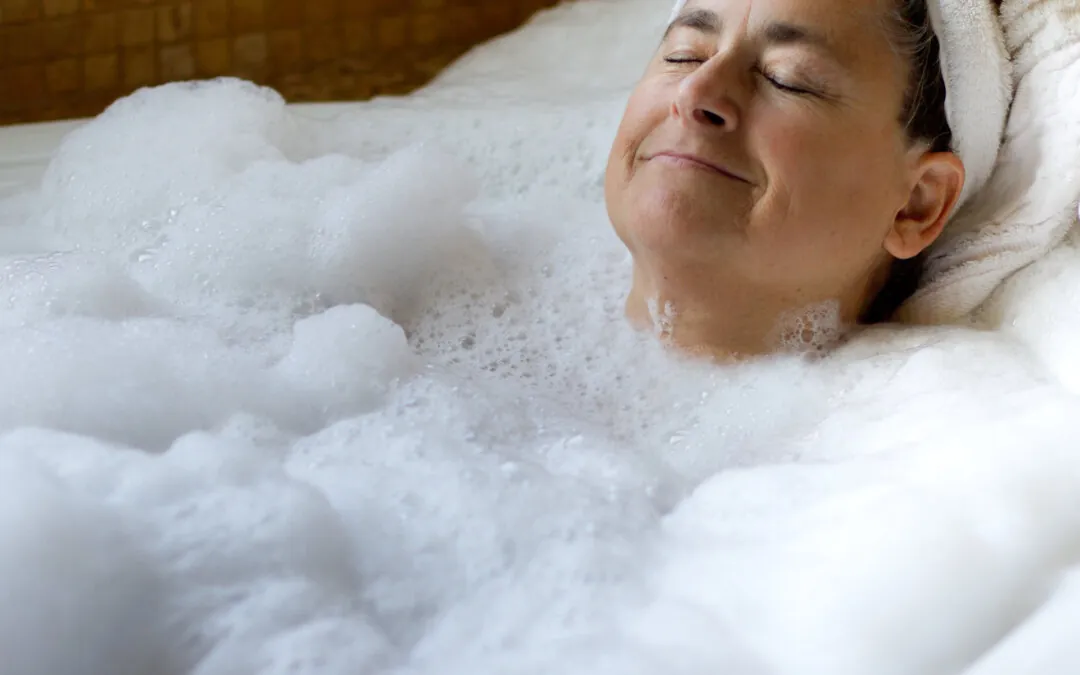
After a long day, a nice, hot bath seems like the perfect solution, particularly if you’ve got sore muscles. But are baths really good for sore muscles? Whether you do a lot of exercise and want to soothe your sore muscles, or your body is just feeling a little bit achy, the first thing you probably do is run a bath.
In this article, we’ll take a deep dive into whether baths are actually effective for relieving sore muscles. Hot and cold water both offer benefits to the body. Knowing which might be good for your body is handy. This guide will also give you an insight into how baths can support recovery and improve your overall well-being.
Get a FREE Brochure
Simply complete our form to see a full range of bathing solutions & their key features. It takes no time at all!
Why Baths Help Soothe Sore Muscles
1. Warm water can help with blood flow
One of the benefits of soaking in a warm bath is that the warm water increases your core body temperature. This then causes your blood vessels to dilate. This leads to better circulation, which can promote faster healing. Studies have shown that immersing in warm water after exercise can improve perceived muscle recovery. It also helps remove lactic acid build-up, a common cause of post-workout soreness.
2. Relieves Tension and Stiffness
Feeling stiff from the gym? Or perhaps you’re suffering from aches and pains due to arthritis. Well, warm water can have a calming effect on the nervous system, which in turn helps reduce muscle spasms. If you’ve got mobility issues, a nice long soak in the bath can help relieve tightness that may have built up from limited movement or sitting in one place for too long.
3. Supports Joint and Connective Tissue Health
When you’re lying in the bath, your body experiences hydrostatic pressure. This is simply the pressure that’s created by water on your body. And this pressure can have a range of health benefits. It can help to reduce joint swelling and has an impact on your lymphatic, musculoskeletal and cardiovascular systems.
When to Use Ice Baths for Recovery
You may have heard of ice water therapy. It became popular when Wim Hof developed his increasingly popular cold water therapy methods. Cold baths can serve a very different purpose from hot baths, so let’s explore the benefits of cold water therapy.
Benefits of Cold Water Therapy:
The research on cold water therapy is a little bit limited. However, some of the main findings include:
- It can have mood boosting benefits. A study by the Journal of Medical Hypotheses found that cold water can help increase endorphin production.
- It can help battle depression and anxiety
- It may help with pain. A study shows that taking short cold baths four times a week reduced pain in people with gout.
Cold water therapy isn’t suitable for everyone, so it’s important you consult a doctor first.
How Long Should You Stay in an Ice Bath?
This very much depends on you and your health. If you’ve got any health condition, always check with your doctor first. Start by exposing yourself to cold water very slowly and for a short period of 30 seconds or less. Then work up to longer periods. Always stop if you start to feel numb, dizzy, unwell or overly shivery. And don’t start with extremely cold water. Try a slightly cooler temperature than you are usually used to, and then you can gradually try colder water as your body adjusts.
Contrast Bath Therapy: Combining Hot and Cold
Another type of heat therapy is when you combine both hot and cold water therapy. This is called contrast therapy because you’re using contrasting temperatures.
How It Works:
- Start in a warm bath (3–4 minutes)
- Switch to cold water immersion (1 minute)
- Repeat the cycle 3–4 times
This technique is thought to help stimulate blood flow and flush waste products from the muscles. Though it’s also worth noting that you shouldn’t try this without consulting a doctor or health expert.
Best practices for using baths to relieve sore muscles
Don’t make the water too hot!
Aim for between 37°C and 39°C. Avoid stepping into a boiling hot bath as you may burn your skin, and if the water is too hot, it might make you feel dizzy and lightheaded.
Don’t soak for too long
Aim for between 15 to 20 minutes. If you spend too much time in the bath it may lead to skin irritation or dehydration. You may also get too hot!
Keep well hydrated
If you sweat in the bath, then you may step out feeling a little dehydrated. Make sure you drink plenty of water before and after your bath.
Try essential oils and Epsom salts
Epsom salts are rich in magnesium, which can support muscle relaxation and decrease inflammation. A few drops of lavender, eucalyptus, or peppermint essential oil can also help you to feel nice and relaxed.
Different types of therapeutic baths
There are so many different types of baths that you may not even be aware of. It’s worth considering which type of bath might be best for you. For example, aromatherapy baths have been proven to help those suffering from disturbed sleep.
Here are some different types of baths and their benefits:
| Type | Benefit |
| Aromatherapy bath | Essential oils can be added to your bath water for stress relief and muscle relaxation (make sure you dilute them properly) |
| Mud bath | A lovely, mineral-rich mud bath can soothe your skin and ease joint pain. |
| Hydrotherapy jet bath | Pressurized jets massage muscles, improve circulation, and reduce stiffness |
| Thalassotherapy | Uses warm seawater and marine minerals to stimulate circulation and detoxify |
| Steam bath | A steam bath helps open up your pores and increases your body temperature to support circulation and muscle flexibility |
| Hot Spring (Onsen) bath | Natural thermal water rich in minerals helps reduce inflammation and stress |
| Balneotherapy | Involves bathing in mineral-rich waters for chronic pain relief and relaxation |
| Contrast bath therapy | Alternates between hot and cold water to improve blood flow and reduce inflammation |
| Cold immersion | Primarily for post-exercise soreness and inflammation control |
The mental benefits of baths
We’ve explored a lot of the physical benefits of baths, but what are the mental benefits? As you probably know, your body and brain are connected. If your mind is relaxed, this can also have a huge impact on how relaxed your body is. Just think about how tense your muscles can get when you’re stressed.
A warm bath is an excellent opportunity to unwind. In fact, a 2020 study found that a 30-minute bath significantly reduced cortisol levels (the stress hormone) as well as improved sleep quality.
When not to use heat therapy
Warm baths are good for a lot of things, but there are certain times when you should avoid hot baths. Avoid hot water therapy if:
- You have a fresh injury or swelling (within 48 hours)
- You have vascular disease or nerve damage
- You’re pregnant and experiencing complications
- You’ve been advised to avoid heat for any specific medical reason
If in doubt, always speak to your GP, physiotherapist or health specialist first.
If you’re struggling with mobility limitations and muscle aches, then getting in and out of a bath can cause issues. Accessible bathrooms can make your bathing and showering experience much easier. Walk-in baths, walk-in showers and skilfully designed wet rooms and can be tailored to your needs.
FAQs
Do hot baths help sore muscles?
Yes. They relax tense muscles, boost circulation, and improve joint mobility.
How long should I soak in a hot bath for sore muscles?
15 to 20 minutes is usually ideal.
How long should I sit in an ice bath for muscle recovery?
No more than 15 minutes in water around 10–15°C.
Can I use a bath to treat a pulled muscle?
Yes, after the initial inflammation phase (48 hours). Avoid heat immediately after the injury and use cold therapy first.






